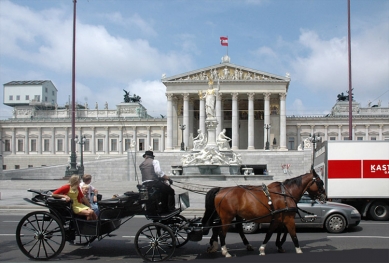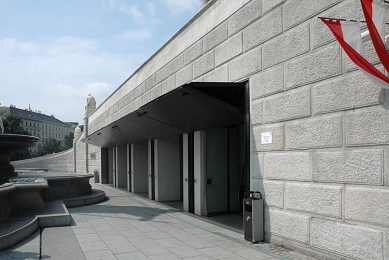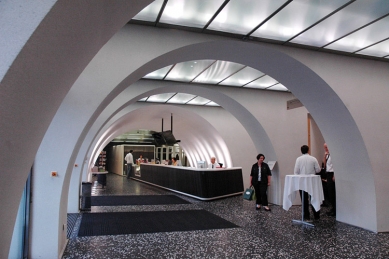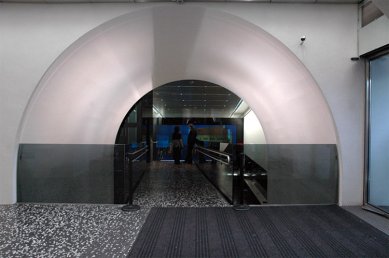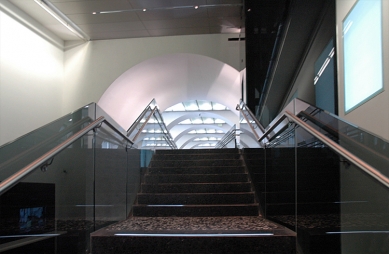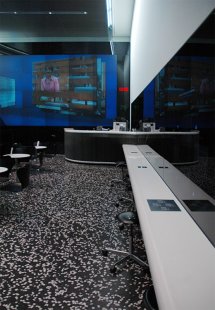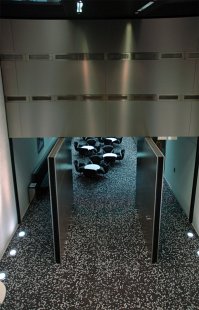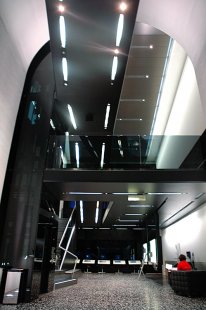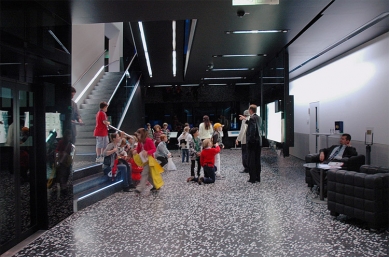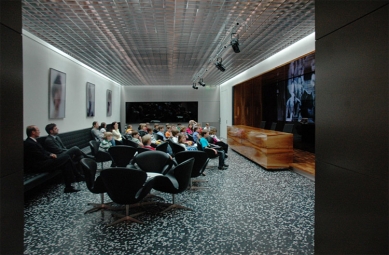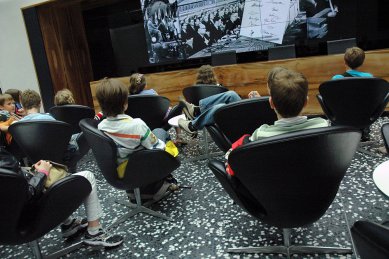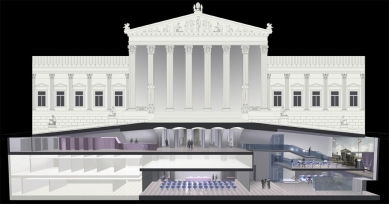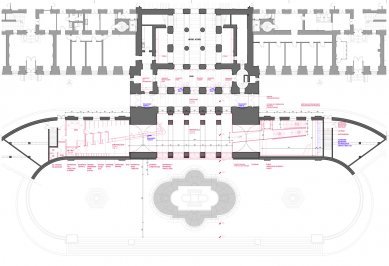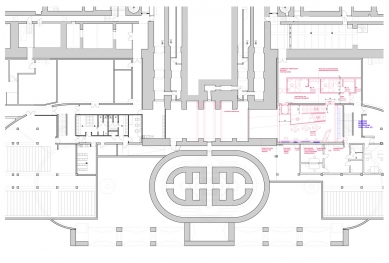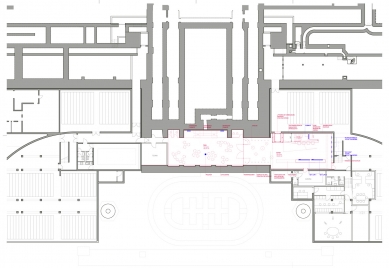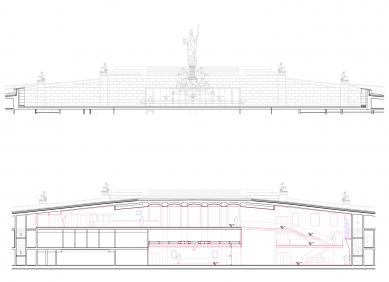
Press and Information Center of the Austrian Parliament

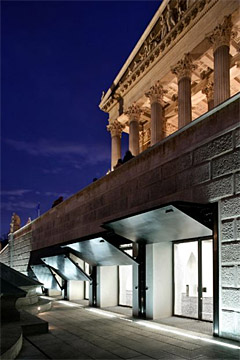 |
The reconstruction of the entrance part of the parliament has been underway since 2002. The main issue was the fountain with the statue of Pallas Athena, which was dampening the foundations of the side ramps and required stabilization. In addition, the vaults under the main columned portico and the ventilation system embedded in the ramps needed to be reconstructed.
During the reconstruction process, circumstances changed (the foundations of the ramps had to be anchored deeper) and new functions were added to the entire project: in addition to the entrance, changing rooms, and information panels, there is now a depository for the parliamentary library, a conference room, and a new ORF studio. For such a scope of modifications, a competition was announced in 2004, in which the project by the Vienna office Geiswinkler & Geiswinkler won. It was possible to implement a central entrance behind the Pallas Athena fountain, which leads visitors into the hall; to the left is the information center and changing rooms, directly ahead is the path through security frames into the historic building of parliament, and to the right, a bridge leads down to the freely accessible information and press center. The materials used are terrazzo flooring, Corian furniture, steel, and tinted glass.
The information center was opened in 2005 to mark the 50th anniversary of the signing of the Austrian State Treaty. An info team operates in the center, to whose explanations I was also (involuntarily) subjected. A whole range of interactive programs discussing Austrian history and the Austrian parliament (functions, political clubs, representatives, percentage representation of women, etc.) is available here. As I also learned, the center apparently did not initially seem very welcoming to visitors, as evidenced by the absence of any information signs about the information center in the entrance hall. Therefore, an info team was engaged to actively approach visitors and explain the function of the center. In addition, school groups are conducted—students in their final years of high school from all over Austria are meant to have the opportunity to visit the capital according to the Ministry of Education.
The English translation is powered by AI tool. Switch to Czech to view the original text source.
0 comments
add comment


